Astrophotography – Beginner’s Guide to Improving Your Night Photography
by Alex W.
Have you ever been truly blown away by an image of the night sky but always thought astrophotography was just too overwhelming to try?
The night sky has overawed the human race for millennia. Whether it was the Babylonians worshipping the stars as deities or Galileo studying them in science, the sprawling sea of endless stars has always had us craning our necks upwards.
Its effect hasn’t dwindled with time either. There is nothing more humbling than staring up at the stars, and for those of us bitten by the photography bug this naturally this extends to capturing images of this wonder.
Anybody who has attempted astrophotography will be fully aware of how different it is to taking photos in the daytime. There are new challenges that you must overcome, and some camera equipment that is an absolute necessity.
The rewards, however, are well worth it. That is something everybody will agree on when they capture a magnificent image of the Milky Way rising above a serene landscape.
Now that I’ve captured your imagination, let’s get into our beginners guide to astrophotography.
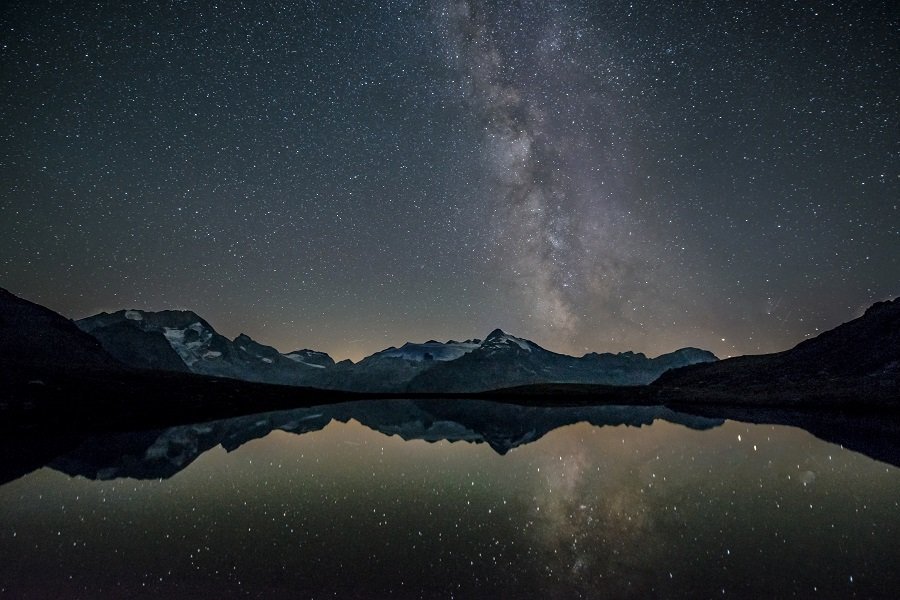
You Might Like… The Ultimate Guide to Waterfall Photography
Contents
Astrophotography Gear Checklist
Like all genres of photography, astrophotography comes with its own specific gear requirements for those that are serious about it. I’m not going to overwhelm you with the dizzying array of star trackers and such, instead just focusing on some of the more basic photography gear that can vastly improve your night photography.
You can also read our guide on the best lens for astrophotography here.
DSLR or Mirrorless Camera
Astrophotography, for the most part, is one of the few subsets of photography that actually requires a good quality camera. Smartphone cameras and point and shoots simply don’t have the specifications required for shooting in low light, although there are a few exceptions.
A full-frame DSLR or Mirrorless is the ideal camera body, but any one of our beginner DSLR or mirrorless cameras is perfectly capable of getting some excellent shots. A full-frame sensor simply improves the image quality further, allowing you to boost the ISO even higher without the same degradation in quality.
If you’re just getting started, a camera such as the Nikon D3500 will still be more than capable of capturing some great nighttime images when coupled with the right lens.
You Might Like… DSLR or Mirrorless – Which System Works for You?
Tripod
Tripods are useful in most walks of photography, but in astrophotography they’re a necessity. You’ll be using shutter speeds that far exceed those at which you can handhold the camera, so mounting it on a good, sturdy tripod is a must.
Which tripod you get depends on a number of things, such as how far you’re planning on carrying it, how tall you need it to extend, and your budget. The link above has a variety of options, and I can also highly recommend the Vanguard Alta Pro 2+ if your budget stretches that far.
If you want some other suggestions, check out our Ultimate Guide to Buying a Tripod here.
Lenses for Astrophotography
This is a section that could fill out an article all by itself. In fact, we’ve got one right here! I’ll keep things short and sweet for now though.
Your 18-55mm kit lens will definitely be capable of getting some good astrophotography shots, but getting a lens capable of capturing more light will open up a world of possibilities for you.
Combine a wide-angle lens with a wide maximum aperture and you have yourself a winner.
The wide angle will allow you to get more of that beautiful night sky in the shot, and the wide aperture means you can collect a lot more light in each shot. The Rokinon 14mm f/2.8 (also branded as Samyang depending on location) is an old favourite in the astrophotography community, and it’s fairly budget friendly as well!
My personal favorite is the Rokinon 24mm f/1.4, although it is a bit more expensive than the 14mm.
There are plenty of other options out there as well, but we’ve saved them for this article.
You Might Like…5 Must-Buy Lenses for your Nikon DSLR
Miscellaneous Astrophotography Gear
- Flashlight – For obvious reasons. It’s going to be dark when you’re shooting.
- Remote Shutter Release – This helps to eliminate any camera shake caused by pressing the shutter, and is also a necessity for star trail photography.
- Extra Batteries – You can end up taking a lot of images in astrophotography, and the colder night air will drain your camera batteries more quickly too.
- Warm Clothing – Nighttime can be deceptively cold, and standing around for a long time means that warmer clothing than you think you need is recommended.
You Might Like… 11 Best Budget Friendly Photography Accessories
Astrophotography Camera Settings
Choosing the right camera settings is one of the main frustrations that beginners in astrophotography face. Many don’t know why their photos are still coming out too dark, or why the stars in the sky are blurry or smudged.
All those questions and more will be answered here though!
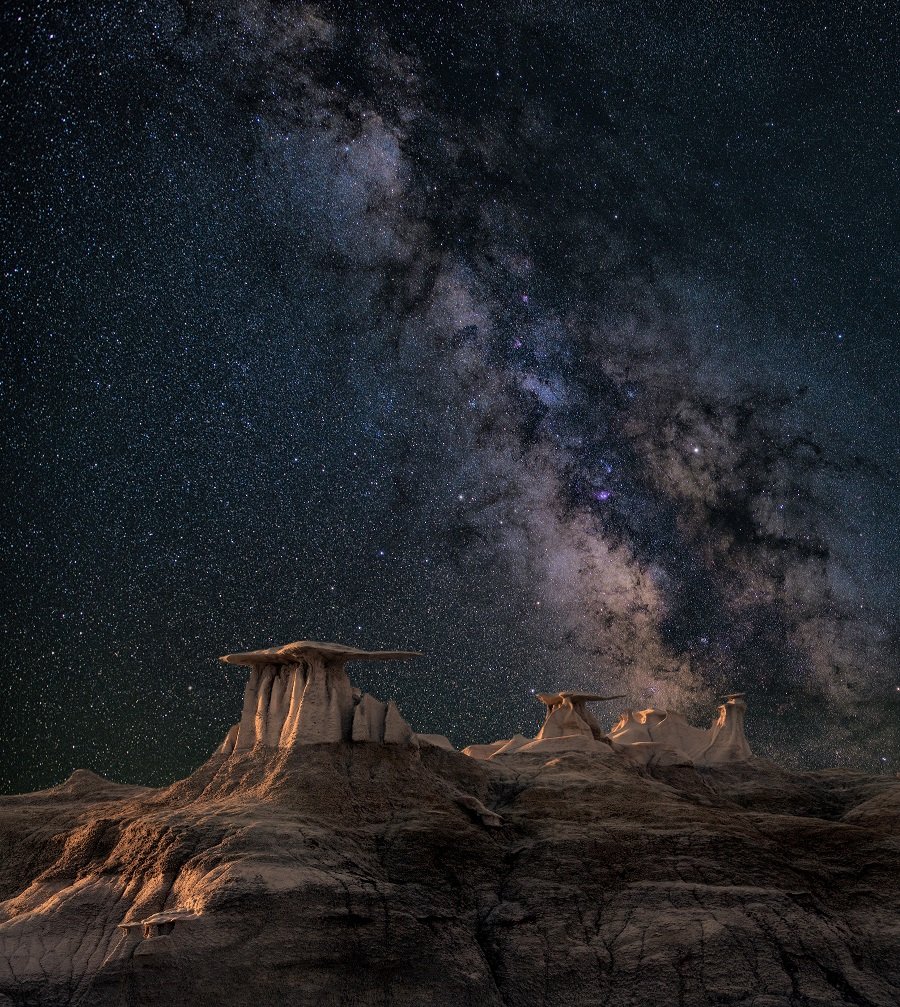
Focusing at Night
One of the major frustrations faced in astrophotography is focusing correctly. Autofocus doesn’t perform well in the dark, and you can often find the camera continuously hunting for focus but never finding it. There are a few ways to approach this:
- Manual Focus – Focusing at infinity on your lens will ensure that the stars are pin sharp, although on zoom lenses you may find you need a bit of trial and error to find the precise infinity focus point.
- Focus on something bright – Search the sky for a bright star, or the horizon for a distant light. You can autofocus on this point, then switch your focus back to manual and recompose the shot.
- Use Live View – By switching your camera to live view you can zoom right in on your image and adjust focus more easily than trying to decide whether something is sharp through the viewfinder.
Shutter Speed and the Rule of 500
It won’t come as a surprise to you that the Earth is always rotating, but what you may not have realised is that this causes the stars to seemingly move across the night sky. It happens slowly, but not slowly enough to ignore from a photography standpoint.
The movement of these stars can cause them to appear smudged on your images, so it’s important to use a shutter speed that is fast enough to ‘freeze’ these stars in the sky. This is known as the Rule of 500.
It’s a simple calculation that you can use to put your shutter speed in the right ballpark for pin-sharp stars. Note that this is for full frame sensors, so if you’re using a cropped sensor you will have to multiply your focal length by 1.5 for Nikon and 1.6 for Canon:
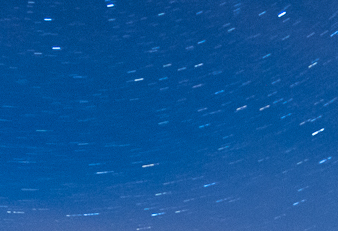
500 / Focal Length of lens = Longest exposure in seconds before the stars begin to trail.
So, for example say that you’re using the Samyang 14mm f/2.8 lens on a full frame camera. You divide 500 by 14, which comes back at just over 35 seconds. You now know that you can use a 35 second exposure before the stars begin to smudge.
On a cropped sensor body you would first multiply 14 by 1.5, giving you 21mm effective focal length. Now it’s the same again: 500/21 = 23.8 seconds.
So there you have it; you’ll never have to worry about trailing stars again. Although, as you will see later, sometimes you want to make star trails.
Bear in mind that this isn’t always an exact science. Things such as larger sensors, declination, and pixel density play a role too, so make sure to double check your shot and see if you need to reduce the exposure time.
Aperture in Astrophotography
Obviously the wider your aperture is the more light your sensor collects, but by shooting with your aperture wide open you decrease depth of field, and run the risk of losing image quality.
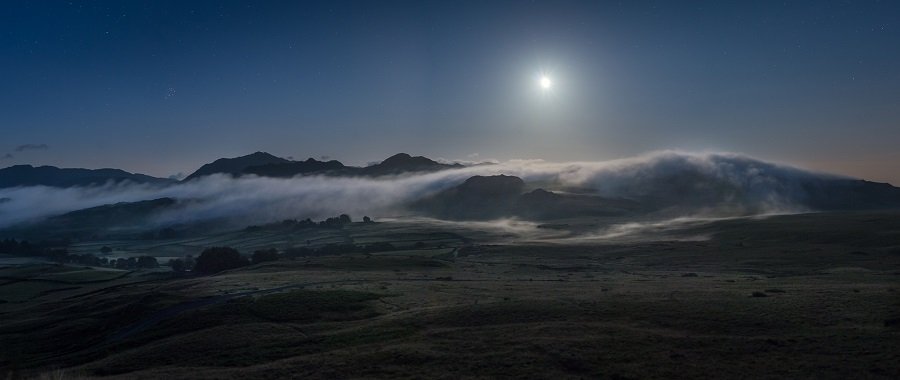
Choosing an aperture in astrophotography is all about compromise. If everything you’re shooting is far away from the lens then you can afford to shoot at the largest aperture possible, but if you have subjects close to the lens as well then depth of field becomes an issue.
You can get around this by focus stacking your images though – Taking one shot wide open to get the best of the night sky and another where you have focused on the foreground subjects. You can then blend these in Photoshop (tutorials coming soon.)
You just have to decide how much depth of field is required and then figure out what aperture would be the best compromise between exposure and depth of field.
ISO – Is Lower Always Better?
In ordinary landscape photography we generally aim for the lowest ISO possible, but when the lights go out and the stars come out this isn’t a possibility. We need to start jacking that ISO up to ensure a bright enough exposure, but by how much?
This is where a common misconception about ISO comes into play. So, ready yourselves, because here it comes… Higher ISO doesn’t necessarily mean more noise.
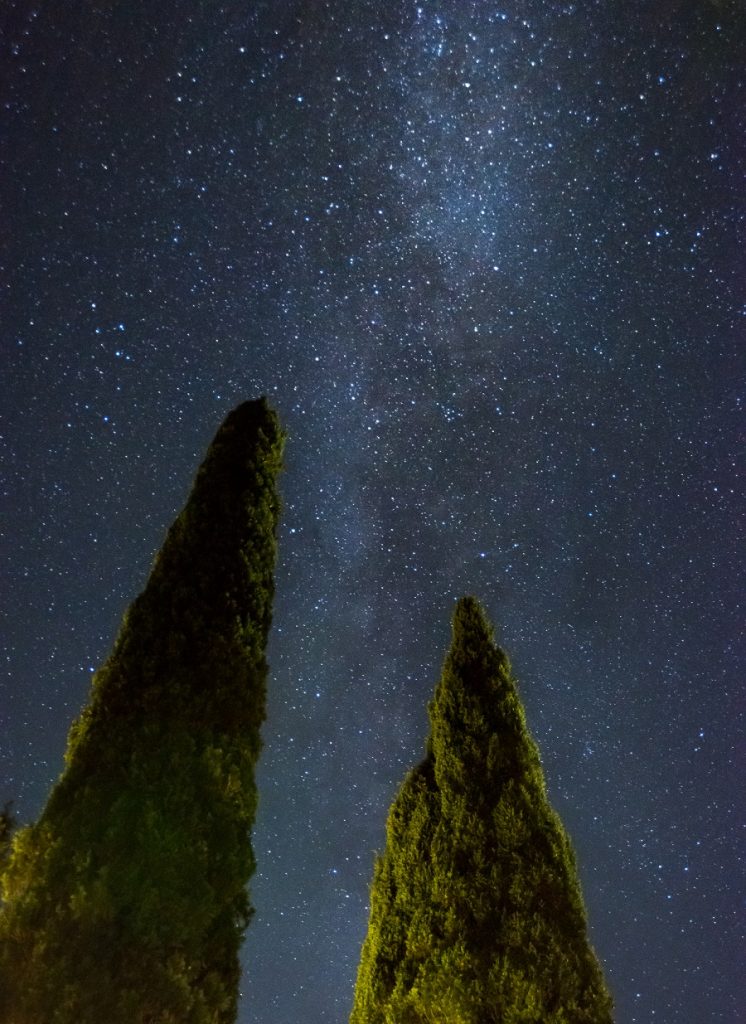
Now, there’s a lot of science that comes into play here, and this article explains it in a fantastic amount of detail. The takeaway is that using a higher ISO doesn’t necessarily result in more noise. In fact, using a higher ISO can actually reduce noise in low light situations (such as astrophotography).
That being said, there are limits to this depending on what camera you’re using. In fact, the article above runs you through a test you can perform to find the optimal ISO setting for your camera. Also, increased ISO still decreases the dynamic range of your image.
In conclusion, don’t be scared to crank that ISO up! Not only does it not always increase noise, but editing suites such as Adobe Lightroom have phenomenal noise reduction capabilities now.
Always Shoot RAW
I don’t hide my preference towards RAW files in any genre of photography, but in astrophotography it is truly essential. We’re pushing our equipment to the limit here, raising the ISO as high as possible and extending the shutter speed for as long as we can to try and capture the minuscule amounts of light available.
Do you know what shooting in JPEG does here? It undoes all of that hard work.
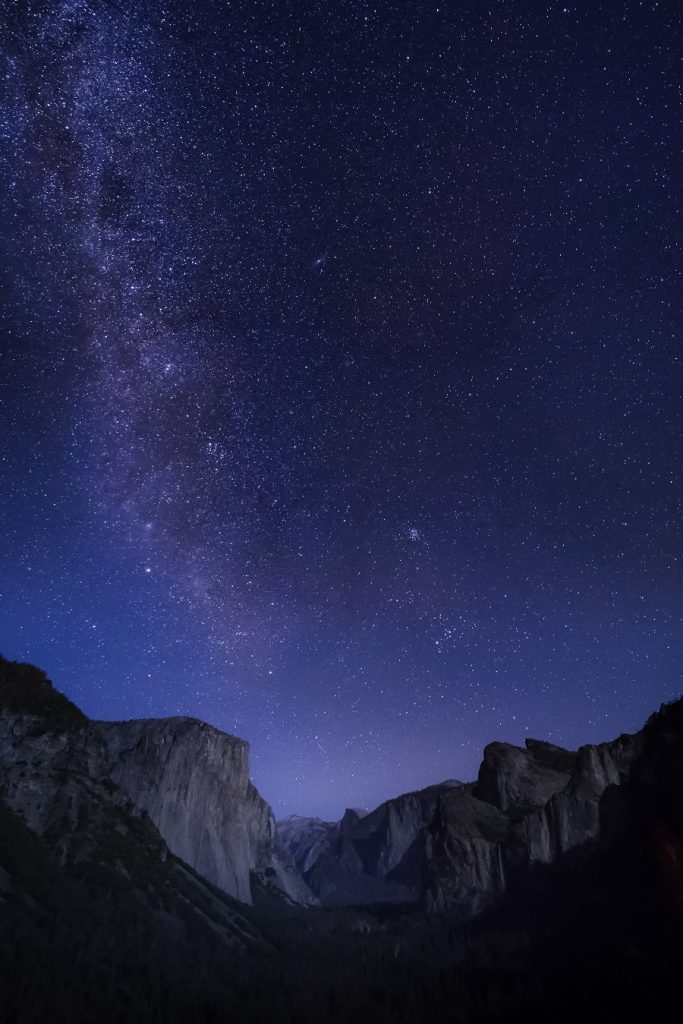
If we’re pushing our gear to the limit we want every bit of data and manoeuvrability available to us in post processing. A RAW file has higher dynamic range and is a lot more flexible in post processing, not to mention the fact that we can tweak the white balance (something which can make or break a night sky image.)
Always Shoot RAW.
Planning and Composition in Astrophotography
Planning your shoot ahead of time is often a wise idea, but in astrophotography it’s even more important. A daytime scout of your chosen location goes a long way to finding promising compositions, not to mention highlighting any potential dangers that may be missed under the cover of darkness.
Planning an Astrophotography Shoot
The first thing you will want to do is find a suitable area for conducting your astrophotography ventures. So what do you need for a successful night sky image? Stars.
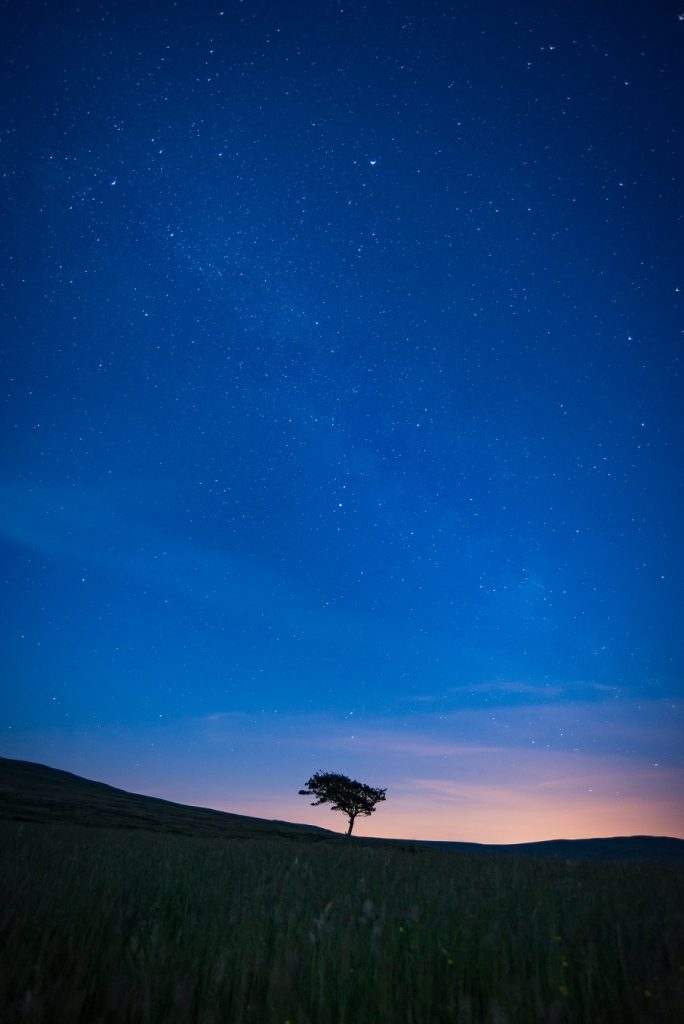
Finding a dark sky is essential, but as with everything these days – There’s an app for that. And for everything else you might need for that matter. The below apps and websites are definitely worth checking out to help with dark sky finding, moon phase monitoring, location scouting, and finding specific night sky features (such as the Milky Way.)
- The Photographer’s Ephemeris – This is really just an all round killer of an app for photographers, and they’ve recently added information on dark sky sites too, making it much more useful to astrophotographers. It also has moonrise and moonset times and the phase of the moon.
- DarkSiteFinder.com – As you might have guessed, this is a wonderful tool for finding dark sky locations. It covers pretty much all of Earth in incredible detail.
- Stellarium – This free, open source planetarium has everything you could ever need for finding astronomy. You can find when and where the Milky Way will rise, visualise constellations, and much, much more. It takes some time and practise to get to know the software, but it’s well worth it.
The weather is also a major player in whether an astrophotography shoot works out. Find a reliable weather forecast for your area and look for a relatively long spell of cloudless skies. Particles of dust and smog in the atmosphere can be a hindrance even then though, so a clear night following a period of rainfall is ideal.
You Might Like… Recreating the Orton Effect in Photoshop
Astrophotography in the Field
So you’ve got the gear, scouted out a potential location and a crisp, clear night is finally upon you. Now all you need to do is actually capture some images!
I’ll remind you now: Composition is king. Just because you’re working at night it doesn’t mean that you can make do without a solid composition to the overall image. No matter what genre of photography you’re pursuing, the composition of the image always comes first.
Use all the compositional tools at your disposal – Leading lines work especially well at guiding the viewer towards the majestic night sky. Don’t forget to break some of the photography rules if necessary as well!
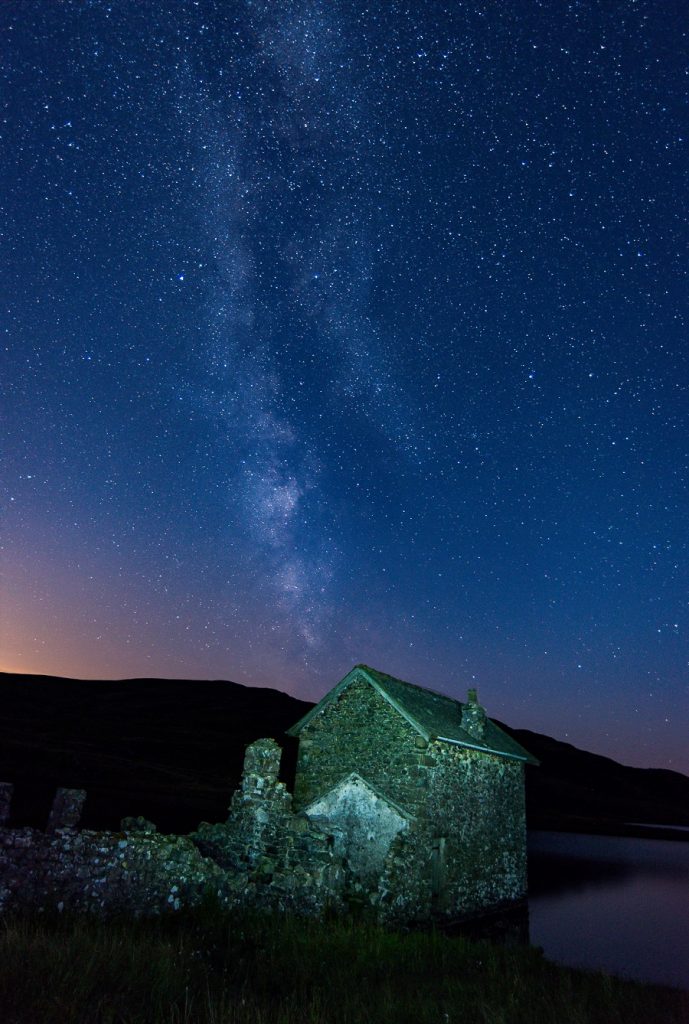
I’ll be brutally honest – Working in the pitch black can be frustrating. A good headlamp is essential (if you cover it in a red gel it will preserve your night vision too) for setting up your tripod and camera, and then having a reliable way to focus your lens will drastically ease the growing pains of the beginner astrophotographer.
Here’s a step by step guide to how I set up for a shoot:
- Headlamp on, I find the area for my composition. Preferably this is one I’ve scouted out by daylight.
- I set up the tripod, mount my camera, and attach the remote shutter release in this general area and begin looking more specifically for a shot.
- Once I’ve got a rough idea of the shot I want I go back to the camera and compose it roughly. There’s no point trying to get it perfect first time, the chances are it will need adjustments.
- I set my ISO to the highest it will go and take a test shot. This is so I can reduce my shutter speed as much as possible, which means I’m not waiting around for 25 seconds just to see if my composition works.
- The resulting image will be poor quality, but it will give me a good idea on the composition. I then start fine tuning the composition until I have precisely what I want.
- One final test shot to triple check the composition.
- Lower the ISO to whichever value I deem best and take an usable image.
- Refine camera settings and focus if needed and repeat.
There you have it. My patented (not really) process for taking an image of the night sky. Of course this varies with each shoot, but it’s a good process to follow loosely.
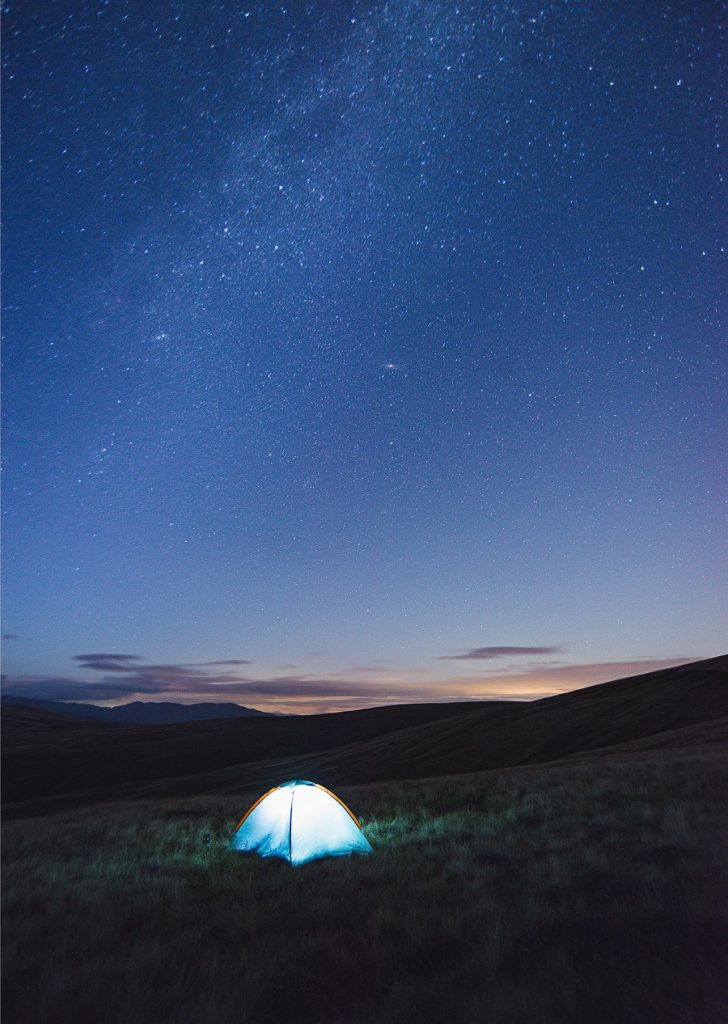
Follow the steps above, double checking all your settings are correct and paying close attention to composition, and you’re well on your way to capturing some good nighttime images.
Closing Thoughts
So, you’ve dipped your toes into the world of astrophotography and come away wanting to swim. Fortunately (or unfortunately, depending on which way you look at it) there is an entire ocean out there for you to explore.
There are some more advanced techniques you can delve into with your current equipment, such as stacking and aligning multiple night sky images and blending longer exposures of the foreground in Photoshop. There will be a tutorial on this in the near future, but it allows you to increase the exposure of the foreground and reduce noise in the stars as well. Star trail photography is well worth considering as well.
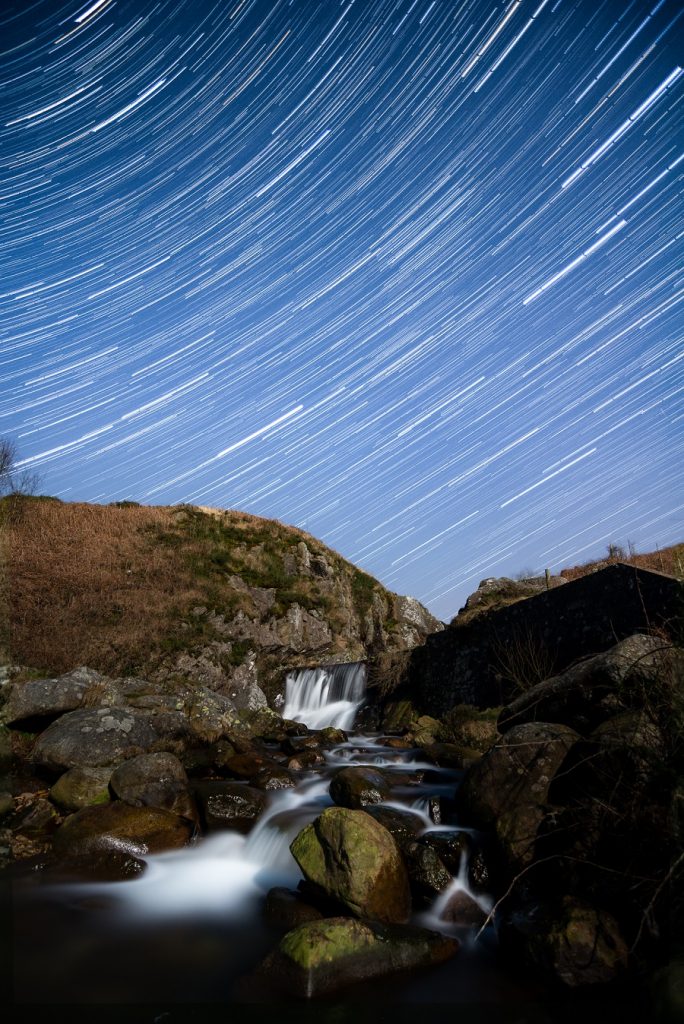
Then you can delve into the murky depths of advanced astrophotography. This can range from simple enhancements such as DIY star trackers (tutorial coming soon) all the way up to deep space photography using a telescope and special adaptor to mount your camera.
In astrophotography the possibilities are as limitless as the universe itself.
Read More…
From Capture to Completion: A Guide to Adobe Lightroom
Ultimate Guide to Landscape Photography Pt I
11 Best Budget Photography Accessories
Ultimate Guide to Waterfall Photography
 |
 |
 |
 |

About Alex W.
Alex is the owner and lead writer for Click and Learn Photography. An avid landscape, equine, and pet photographer living and working in the beautiful Lake District, UK, Alex has had his work featured in a number of high profile publications, including the Take a View Landscape Photographer of the Year, Outdoor Photographer of the Year, and Amateur Photographer Magazine.
Thoughts on "Astrophotography – Beginner’s Guide to Improving Your Night Photography"
 |
 |
 |
 |
You can Get FREE Gifts. Furthermore, Free Items here. Disable Ad Blocker to receive them all.
Once done, hit anything below
 |
 |
 |
 |